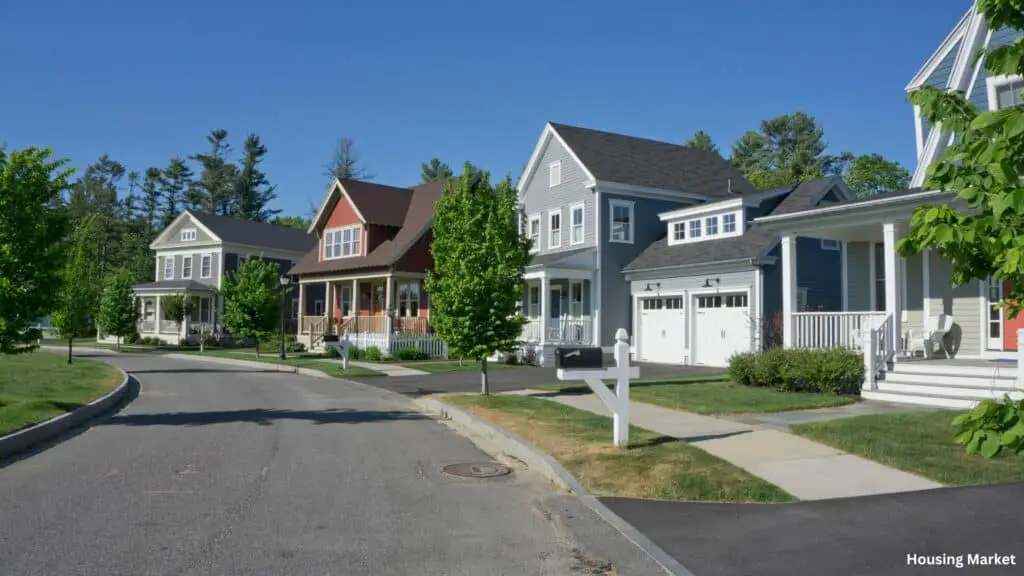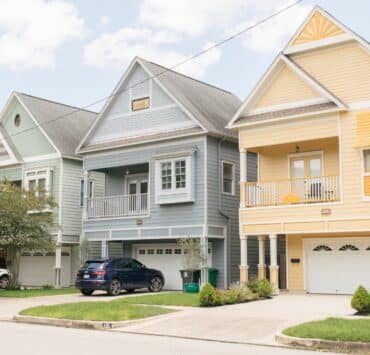As the election draws near, the election impact on housing policy is thrust into the spotlight, revealing deep-seated challenges and stirring vigorous policy debates. This critical period highlights how elections shape strategies that could address the pressing issue of housing affordability, underscoring the significant role of political decisions in framing housing policies.
Highlighting the Housing Affordability Crisis
The historic lack of affordable housing has become a critical talking point in the election campaigns. With housing prices rising 50% faster than incomes over the past two decades, the economic pressures on American families have intensified.
The median home price reaching a record high underlines the escalating crisis that transcends political boundaries, affecting citizens across red and blue districts alike.
Recent administrations have seen a dramatic decline in new housing production, exacerbated by rising construction costs and stringent local regulations, contributing to a national shortfall of nearly 4 million homes.
Political Promises and Voter Concerns
The upcoming election has prompted candidates to outline comprehensive strategies to make housing more affordable. From expanding the Low-Income Housing Tax Credit to introducing new credits aimed at first-time homebuyers, the proposed measures showcase a proactive approach to legislative change.
However, these promises face the challenge of partisan divisions and the practicalities of policy implementation.
The bipartisan support for various housing bills, such as the Affordable Housing Credit Improvement Act, reflects a growing legislative focus on resolving housing affordability issues.
Post-Election Impact on Housing Policy
Post-election, the focus will shift to enacting these housing policies. This period will be crucial for turning campaign promises into effective actions that can provide tangible relief to affected populations.
The effectiveness of these policies will largely depend on overcoming bureaucratic hurdles and ensuring adequate funding.
Initiatives like funding for rental assistance and tax credits for middle-class renters are aimed at directly reducing housing costs for Americans, highlighting a direct approach to alleviating the affordability crisis.
The election’s impact on housing policy is a testament to the significant role political processes play in addressing complex societal challenges like housing affordability.
Shift in Housing Affordability and Ownership Age
In 1980, purchasing a home was a more accessible milestone for Americans, with the average home price being just over three times the average household income. At that time, the typical first-time homebuyer was around 30 years old. Fast forward to today, and this picture has drastically changed; the home price-to-income ratio has more than doubled, pushing the age of first-time homebuyers to nearly 45.
The average home price has escalated to nearly $500,000, whereas the average income lags behind at approximately $74,500, illustrating a stark gap between earnings and housing costs.
Policy Contributions to Housing Challenges
The escalation in housing prices is not merely a result of market forces but is significantly influenced by government and local policies. In the 1980s and 1990s, many growing cities actively discouraged denser housing forms like attached homes, which could have been more affordable, due to concerns about their potential impact on local services and demographics.
In recent years, however, there has been a shift towards encouraging denser land use, yet this has led to a decreased availability of single-family homes, exacerbating the affordability issue. Moreover, local governments have implemented high impact fees on new housing developments, ostensibly to fund public amenities but effectively driving up home prices further.
In places like Orange County, Florida, and Alameda County, California, impact fees and housing fees add tens of thousands of dollars to the cost of new homes, making them less affordable for new buyers.

The Role of Federal Intervention and Missteps
The federal government has also played a role in shaping housing market dynamics through various interventions. Recently, new energy efficiency mandates for houses were introduced, purportedly to reduce utility costs for homeowners. However, these mandates are expected to increase new home prices, potentially by tens of thousands of dollars, adding another layer of cost to already strained homebuyers.
Despite the potential for federal funds to incentivize better local land-use policies and reduce impact fees, often federal actions have unintended consequences that do not necessarily address the underlying affordability issues.

As policymakers and voters engage in dialogue and debate, the forthcoming election presents a pivotal opportunity for adopting measures that could lead to substantial improvements in housing affordability.
Related posts:
 Decline in Home Prices: Anticipating a Shift in 2024
Decline in Home Prices: Anticipating a Shift in 2024
 Maryland Governor Legislative Agenda: Military Families, Housing, and Public Safety in 2024
Maryland Governor Legislative Agenda: Military Families, Housing, and Public Safety in 2024
 Nashville’s Zoning Bills for Middle-Income Housing Spark Contentious Debate
Nashville’s Zoning Bills for Middle-Income Housing Spark Contentious Debate
 New York’s Affordable Housing: Innovative Solutions Without Tax Hikes
New York’s Affordable Housing: Innovative Solutions Without Tax Hikes
 Zillow 2023 Home Sales Analysis: Prime Listing Time for Maximum Profit
Zillow 2023 Home Sales Analysis: Prime Listing Time for Maximum Profit





